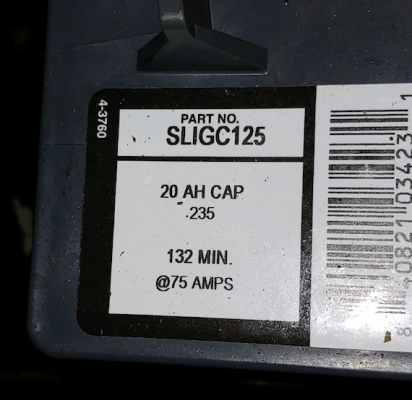Here is a cut and paste from another forum tha looks to be from a Deka manual that I haven.t found.
"The Sam's East Penn made Duracell GC2 is a Deka GC-10 with a Duracell Sticker. The Sam's EGC2 is a Deka GC-15 with a Duracell Sticker.
The recommendations from East Penn, for that battery, in a cycling / off-grid application are. (Note: floats are higher in off-grid than typical
golf cart use).
At 12V:
Max Charge Current = 30% or less of Ah capacity (20 hour)
Absorption Voltage = 14.4V - 14.7V
Absorption End Point = Current change over 1 hour period of less than 0.1A
Max Absorption Time = 12 Hours
Float Voltage = 13.8V - 14.1V
Float End Time = No Limit
Equalization = 15.0V to 15.3V
Equalization End Point = Current change over 1 hour period of less than 0.1A
Max Equalization Time = 12 Hours
Temp Compensation = -.018V for every degree °C rise above 25C
Note:
For
dock charging you may want to compensate float down to 13.4V to 13.6V the guidance above is for off-grid or deep cycling applications where the batteries are cycled daily.
Stick to the 14.7V end of the absorption range and the batteries will do much better if they are cycled while cruising."
If specs correct, I agree with the comments also. Daily cycling would explain the otherwise too high, IMO, float voltage of up to 14.1v. Trojan has similar different specs for daily cycling with 14.7 absorption and higher float than for non daily use.



